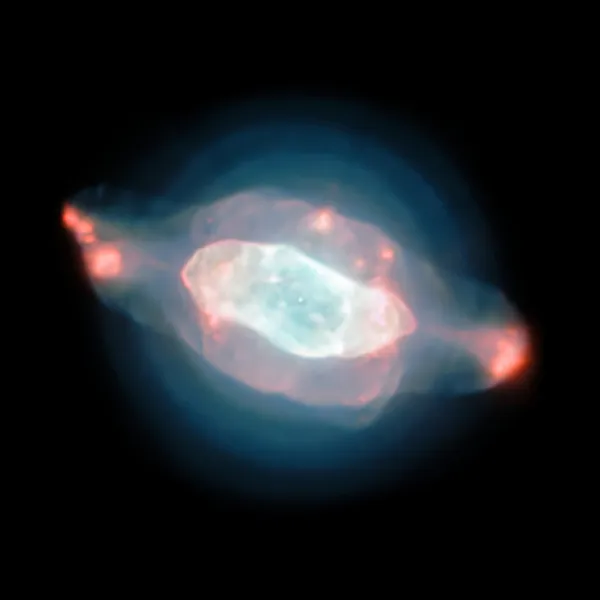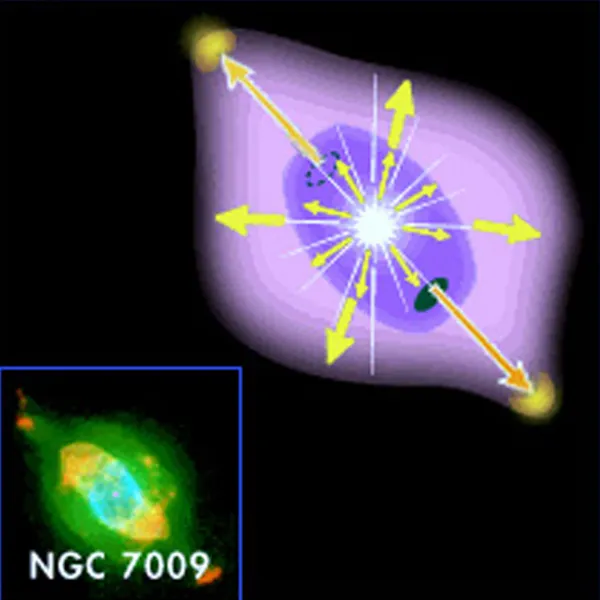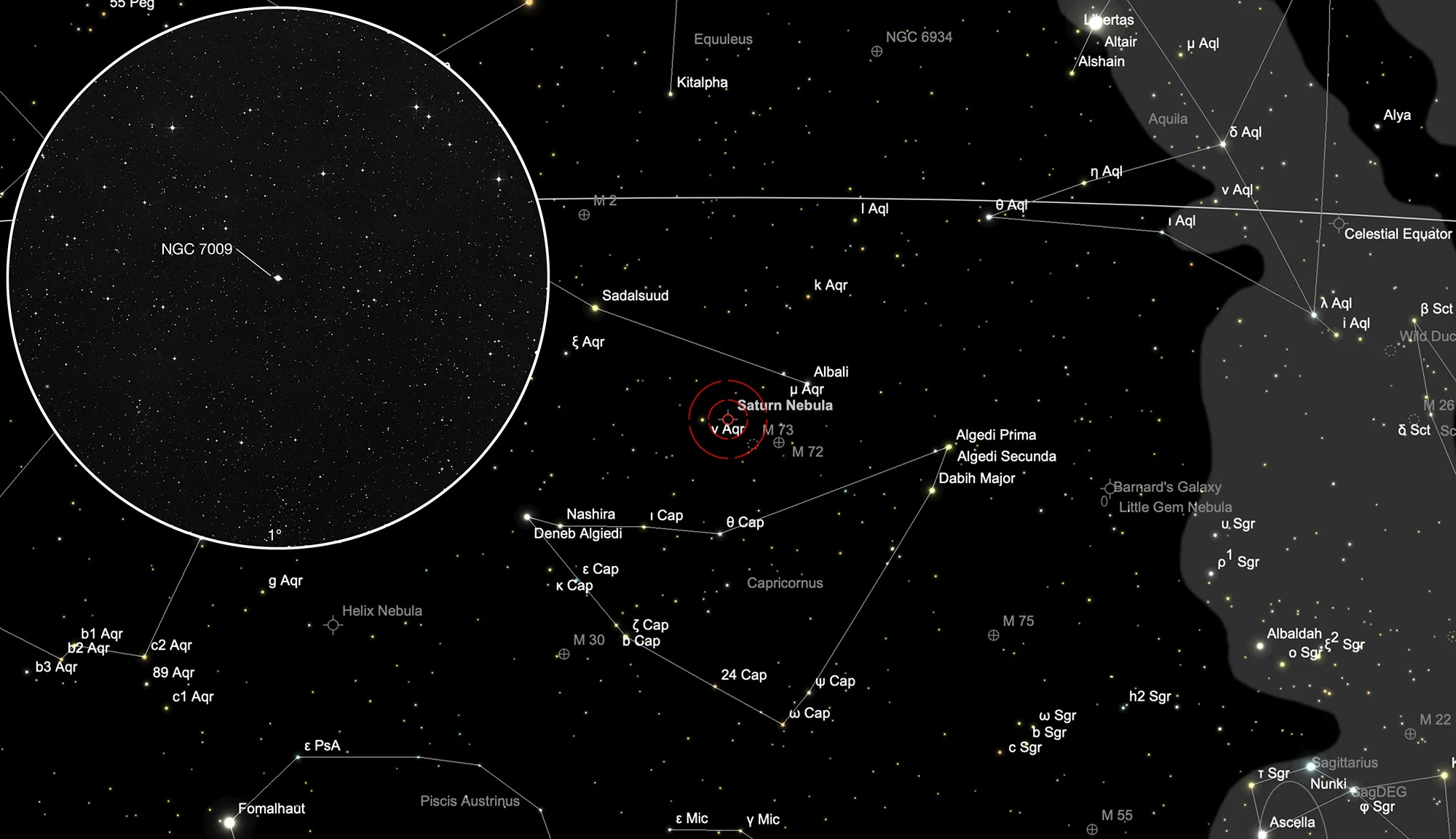Saturn Nebula (NGC 7009)

History
This planetary nebula was discovered on 7 September 1782 by William Herschel with his small 6.2 inch reflecting telescope. He entered it as IV 1, where class «IV» applied to his visual classification for planetary nebulae, to which he also included unusual shapes such as «stars with burs, with milky chevelure, with short rays, remarkable shapes, etc.» He described the PN as a «very bright, nearly round planetary, not well defined disk». [463] NGC 7009 was later nicknamed the «Saturn Nebula» by Lord Rosse because of its elongated shape, reminiscent of Saturn's rings. [196] The PN was given the designation NGC 7009 by John L. E. Dreyer in his «New General Catalogue of Nebulae and Clusters of Stars» published in 1888. [313]
Physical Properties

At Simbad one finds a distance of 1325 pc for NGC 7009. [145] Originally, the star had less than eight solar masses and shed its envelopes into space. The central star is now a hot white dwarf with an apparent magnitude of about 11.5, which causes the nebula's gas to glow green with its strong UV radiation. [234]
| Designations | PN G037.7-34.5: NGC 7009, PK 37-34.1, ARO 16, VV 259, VV' 541, EM* CDS 1211 |
| Right Ascension (J2000.0) | 21h 04m 11s |
| Declination (J2000.0) | -11° 21' 57" |
| Dimensions | 28.5" (optical) |
| Distance | 0.60 kpc |
| Radial Velocity | -44.0 ± 3.0 km/s |
| Expansion Velocity | 20.6 (O-III) 20.0 (N-II) km/s |
| C-Star Designations | AG82 419, BD -11 5511, GCRV 13233, HD 200516, TD1 27614 |
| C-Star Magnitude | B: 12.66, V: 12.78 |
| C-Star Spectral Type | O(H) |
| Discoverer | HERSCHEL 1782 |
Finder Chart
The Saturn Nebula is located in the constellation Aquarius, north of Capricornus. On 6 August it is in opposition to the Sun and crosses the meridian at local midnight. The best observation time is April to January.
Visual Observation
635 mm Aperture: The Saturn Nebula NGC 7009 immediately appears as a bright oval with a dark inner part, in which the central star can be temporarily observed. To the right of the elongation, there is a slightly brighter point, which is connected to the oval in a streak-like manner. This is mirrored on the left side, albeit slightly fainter. When magnified further, a faint halo around the oval becomes visible, creating an overall round impression. — 25" f/4 Obsession-Dobson, Tivoli-Astrofarm at 1340m AMSL in Namibia, SQM 21.92 m/s2, 11. 9. 2023, Stefan Meister, Eduard von Bergen
